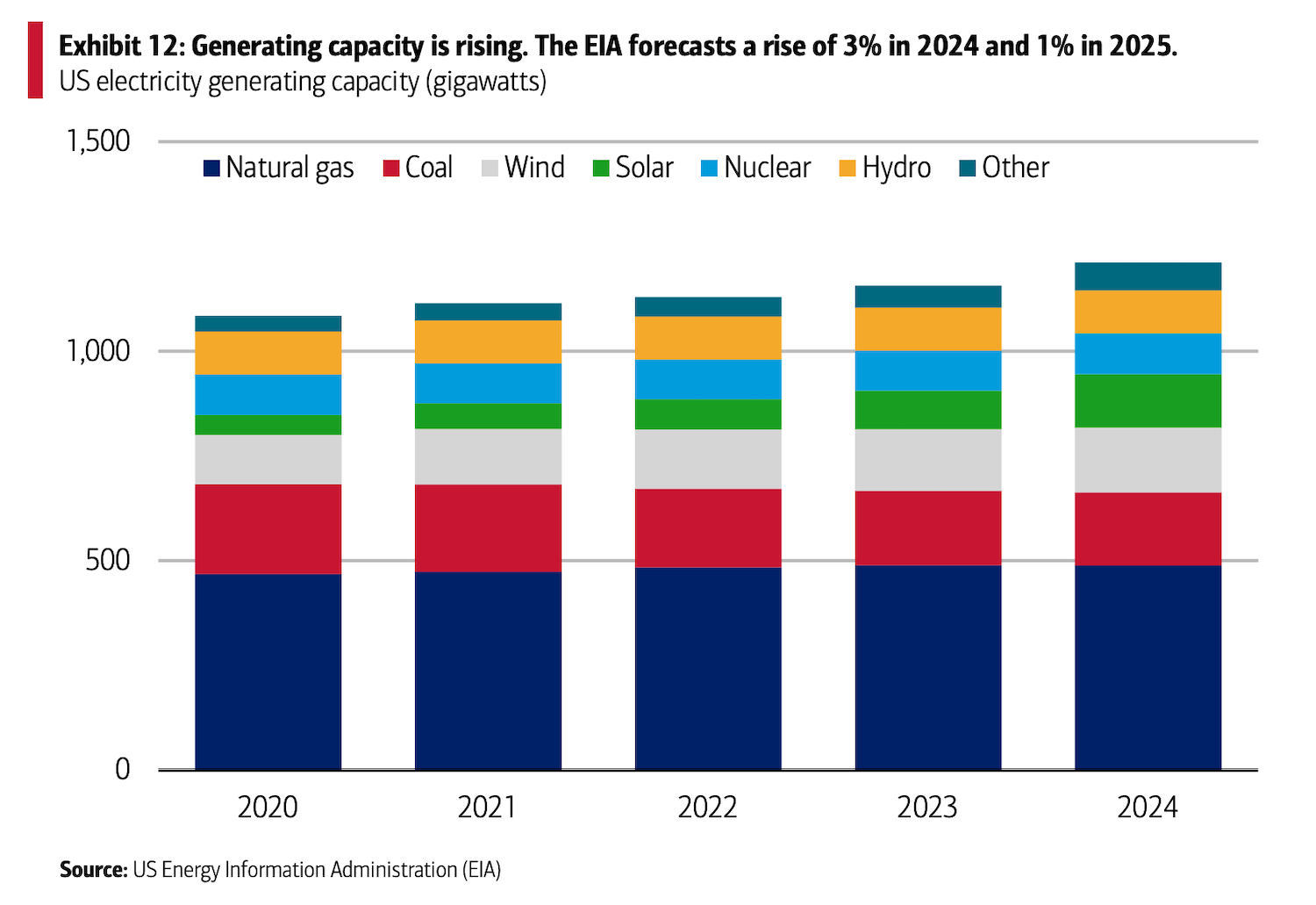
(Image: Brett Sayles/Pexels)
The artificial intelligence (AI) revolution is powering innovation, but it's also powering a surge in electricity demand that could strain our energy grid and lead to higher utility bills for consumers, according to a new report from the Bank of America Institute. While consumers recently saw some relief with a slight decline in the median utility payment per customer in early 2024, utility bills remain significantly higher than they were five years ago.
“The steady rise in population is a bedrock of demand growth,” said David Tinsley, senior economist at the Bank of America Institute. “But industry and commerce, already massive consumers of electricity, together have double the demand for electricity as residential use.”
The report identifies several key factors contributing to the escalating electricity demand. First, AI processes are incredibly energy-intensive, and AI chips require both substantial power to operate and to cool. The proliferation of data centers and cloud computing services, essential for supporting AI and other digital technologies, requires massive amounts of electricity for servers, storage and cooling systems.
“AI processes are so energy-hungry because they do things computationally faster,” Tinsley said. “For example, AI uses two kilowatt hours per 1,000 tasks, and AI chips run so many tasks per second that they get very hot, much more so than regular chips. The cooling requires electricity over and above what regular chips need. The use case is exploding.”
To meet current AI demand projections, the U.S. will need to increase its electricity generation capacity by 3 percent, Tinsley said.
Policy changes have also influenced electricity demand and use. Government incentives like the Inflation Reduction Act (IRA) and the CHIPS and Science Act have helped lead to a resurgence of North American manufacturing, including the construction and operation of new factories and manufacturing facilities, which requires a significant amount of power.
“The IRA and CHIPS Act have stimulated a lot of investment into manufacturing capacity in the U.S., so people are bringing their long supply chains back,” Tinsley said. “There are a lot of positives attached to that, but manufacturing tends to be an intense driver of electricity demand, so there will be increases to service the onshoring process.”
Additionally, the steady growth in the U.S. population, shifting demographics, the rise of electric vehicles, and demand for larger homes are putting further strain on the power grid.
As electricity demand continues to rise, lower-income households have the largest utility cost burden. Households with monthly incomes below $4,000 spend about 8 percent of their income on utilities, compared to only 1 percent for households earning over $10,000 monthly, according to the report.
However, while there has been some recent dips in utility bills, the report notes one solution that could bring about longer-term relief: renewable energy. Electricity generation in the U.S. is predicted to increase by 3 percent this year and 1 percent next year, according to the report. The majority of that growth comes from renewable energy sources — 70 percent from solar alone.

While renewable energy sources are expected to contribute significantly to new electricity generation moving forward, the U.S. currently relies on fossil fuels for about 60 percent of total power generation.
“The big question is can renewable electricity generation capacity rise to meet demand,” Tinsley said. “While AI is unpredictable, the good news is that most of the additional capacity currently forecasted is coming from solar, which has become cheaper. As that continues, it is possible for the supply of renewables to meet that demand. The current rise and strong investment in solar needs to continue.”
The future of utility costs and electricity demand is complex, with technological advancements and economic shifts likely to continue driving demand upward, which may lead to higher long-term costs.
Tinsley emphasized the importance of policymakers and stakeholders monitoring these trends to mitigate their impact on consumers, especially those most vulnerable. “The AI rollout is a multi-decade thing, so we can feel relatively comfortable that solar and renewables can build out in the next four to five years to meet the demand,” Tinsely said. “Policy needs to be supportive of that, ultimately.”

Mary Riddle is the director of sustainability consulting services for Obata. As a former farmer and farm educator, she is passionate about regenerative agriculture and sustainable food systems. She is currently based in Florence, Italy.














